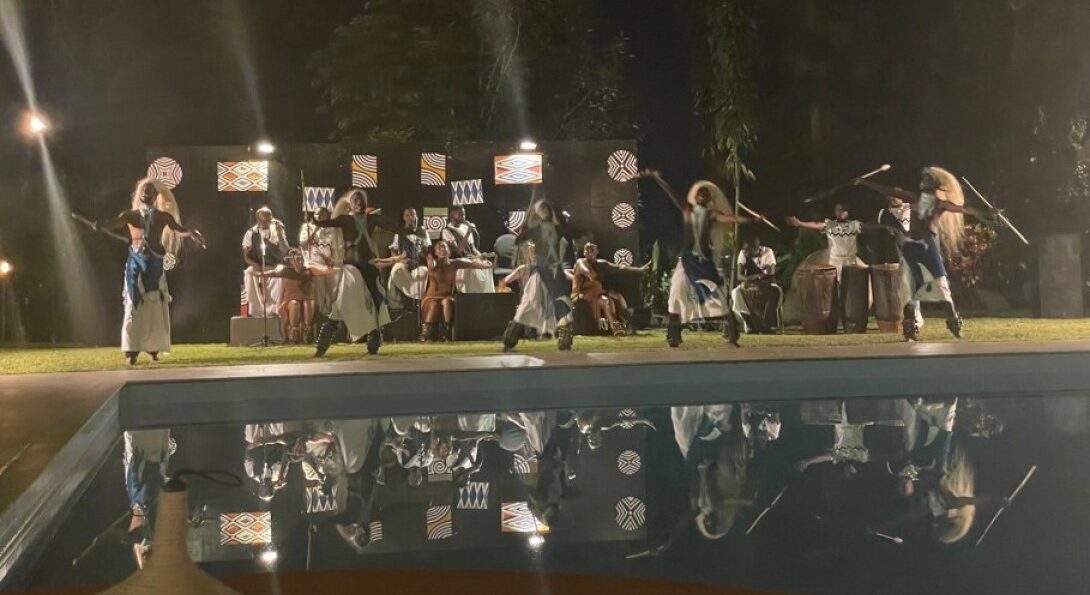A Piece of Home in Rwanda

Week 1
Celeste Jimenez, MS Student
One night we experienced the traditional dance here in Rwanda at Hotel des Mille Collines. It was very exciting to see the traditional garments worn by men and women. While watching the performers, I was curious about the meaning behind their dances and movements. I later learned that they performed an ancient warrior dance called the Intore Dance. The Intore, in the past, was an elite protective force of warriors for the King. They used to dance exclusively for the King to celebrate victory and showcase their ferocity and commitment.
The traditional dancers previously wore ankle bells when hunting, and now they are used to accentuate the sound of music and dance rhythm. The men (pictured below) also wore a long mane of pale-colored hair made of sisal fiber to represent a lion’s mane.
The women dancers made many graceful and elegant arm maneuvers extending their hands outward and upward, which I learned represents the large horns of the Inyambo traditional cow. The cow is a status symbol and is often trained to parade and dance in traditional dances to honor the King during special ceremonies. The cow in traditional Rwandan society is also a symbol of prosperity.
The cow is a status symbol and is often trained to parade and dance in traditional dances to honor the King during special ceremonies. The cow in traditional Rwandan society is also a symbol of prosperity.
Watching the women and men do their traditional dance, I wondered if they knew how to dance “bachata” and “salsa,” as some of their movements were similar. These are the typical dances of my Puerto Rican culture and are often danced in Latin clubs in Chicago and at regular family gatherings and BBQs. The thought quickly passed my mind as I didn’t think it would be popular here as “Kizomba” and other traditional dances would.
However, I discovered there seemed to be a very vibrant dance culture in Rwanda. One night, we stepped out to experience the nightlife in Kigali. A chance meeting with a local college student on campus suggested a local club. So on the following Friday night, we walked into the club and immediately heard the familiar beats I have heard time and time again. Then I looked at the young people on the dance floor and was surprised they were dancing the bachata! A huge smile appeared as I quickly saw how amazing they were. They were doing the same spins and moves I have done when dancing with family and friends back home.
This familiar scene caused me to realize that Latin dances are universal. I also recalled that I learned that many of our traditions incorporated African culture when the enslaved people were taken to Latin America and the Caribbean. For example, African drumbeats are incorporated into most of our music and dance.
Overall, it was really nice to experience a ‘piece of home’ here in Rwanda.
Celeste Jimenez is in the graduate-entry nursing program at UIC and will be earning her Masters degree in December 2022. She is a first-generation college student and holds a bachelor’s degree in Biology from Oberlin College. She plans to earn her doctorate and become either a family nurse practitioner or midwife. She is Puerto Rican, born and raised in Chicago.